REEF SAFE + SUN SAFE
Understanding the world of sun safety and reef safety can be complicated. Let us help you by dispelling a few myths.
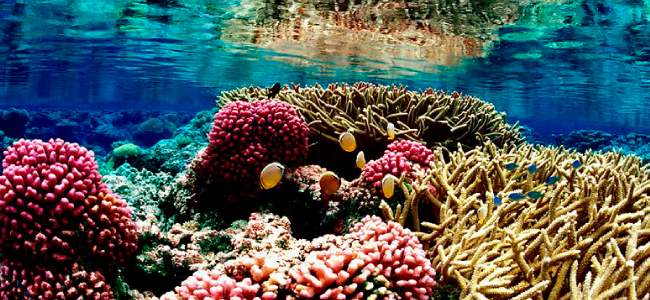
With summer upon us, even if it doesn’t quite seem like it, folks need to start thinking about sunscreen.
Okay, let’s dispel that concept first. UVA rays are the same whether it’s January or August, so you should consider sunscreen as a year-round effort, just like brushing your teeth.
A couple of motivational facts to increase to your interest in your use and children’s use of sunscreen: One bad burn before the age of 16 and you double your chances of cancer. ("Dear 16 Year Old Me") Okay that’s not good. On the brighter side, a recent study showed daily use of sunscreen reducesskin aging by 24%.
So now you head to your local drugstore to buy sunscreen and suddenly you’re confronted by a vast number of solutions all touting different benefits and the promise of protection. There is definitely a lot of confusion about sunscreen, and it’s probably on purpose.
So we thought, we’d give youthe straight goop on sun protection, so you can focus on having fun in the sun.
Reef Safe
There is a lot of momentum around rooting out chemicals in sunscreen that have been linked to coral reef damage. The science relates to a grouping of chemicals that are found in a vast majority of chemical based sunscreens. As such they have recently become banned in Hawaii with other states in various stages of potentially adopting similar measures. Companies that are producing sunscreens that do not contain these chemicals are now making the claim that they are Reef Safe. The most important thing to remember here is that there is No accredited test to verify this yet. Hopefully a test will be created (which does not include animals, remember coral is a living thing), which can make this determination. Mineral sunscreens have posited that because zinc oxide is a mineral that it does not pose potential harm to coral reefs. With that said, we are just as reef safe as any other company presently making the statement, but without an accredited test, no company should be making the claim. Below is the list of ingredients that have been identified as problematic and banned. Again, none of these ingredients have ever been in our products.
- Any form of microplastic sphere or beads
- Any nanoparticles like zinc oxide or titanium dioxide
- Oxybenzone
- Octinoxate
- 4-methylbenzylidene camphor
- Octocrylene
- Para-aminobenzoic acid (PABA)
- Methyl Paraben
- Ethyl Paraben
- Propyl Paraben
- Butyl Paraben
- Benzyl Paraben
- Triclosan
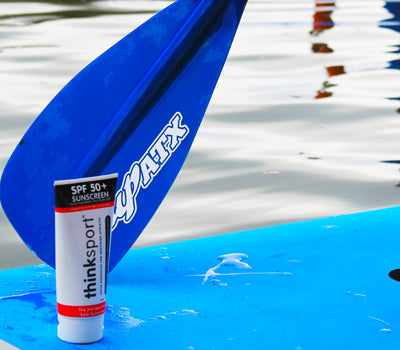
Media Coverage
- The Washington Post: Hawai'i Is About to Ban Your Favorite Sunscreen to Protect it's Coral Reefs
- CNN: Hawai'i Sunscreen Ban
- NPR: Many Common Sunscreens May Harm Coral Here's What To Use Instead
If you want a “gulp” moment, consider that 25% of the world’s fish population gets their start from coral reefs. And we are facing one of the largest coral reef bleaching events in history.
Safe Sunscreen
Just google searching chemical sunscreenand you’ll find a raging debate on ingredient safety and efficacy. We all like to think that chemicals that we interact with on a daily basis are regulated by some aspect of the government. But, the reality is that the cosmetic and chemical industries are highly unregulated. There are 80,000 chemicals in commerce today and only 5 have been removed from use over the last 30 years… Yes if that seems ridiculous, you are correct.
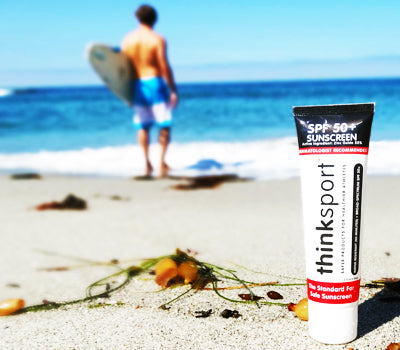
There are two types of sunscreens on the market. The first is chemical sunscreen. They work by taking the UV light and try to convert the light into something less harmful. The downside is that they not only generate free radicals, but the chemicals themselves are highly questionable. Luckily there is a database that provides unbelievable support in locating information relating to these ingredients. The database was put together by the Environmental Working Group and it’s called Skin Deep. The database currently has over 1500 sunscreens entered, but even if you don’t find your formula, you can easily put each individual ingredient in to see its safety rating. The second types of sunscreens are mineral based solutions. You’ll either see Zinc Oxide or Titanium Dioxide as the active ingredient. Mineral sunscreens work by reflecting the UV light. Keep in mind it’s important to understand what is in the inactive ingredient list. It is easy for harmful chemicals to make their way into that list as well. So solely focusing on the active ingredients will only provide you part of the safety story.
Chemical sunscreens make up the majority of the market unfortunately. They are both cheap and apply clear. Mineral based solutions can cause some amount of whitening during use and are also more expensive. But at what cost is it cheaper. Some mineral base formulations have also taken to using clear zinc or nano particle sized zinc or titanium. We recommend utilizing a non-nano zinc oxide solution. There is just not enough data on the ability for nano particles getting into the blood stream. As such, it is better to embrace the Precautionary principle.
No brand of sunscreen can market to children less than 6 months of age. You should consult with your doctor before applying any sunscreen. Our suggestion would be to ask them about skin patch testing and also bring the ingredients deck. Incidence of allergic responses has skyrocketed over the last two decades. Any sunscreen that is marketing itself as “hypo-allergenic” is engaged in false marketing. There are plenty of natural ingredients (like nuts) that children are allergic too. There is just no way of guarantying allergic response.
Understanding SPF
First, consumers have been led to believe that ultra-high SPF numbers like 70 and 100 provide much more protection than SPF 30. False. SPF 30 provides 97% protection from UVB and SPF 100 provides 99% coverage for UVB. Basically, you’re getting a marginal increase in protection. And unfortunately, the chemicals that are used to boost SPF are not favorable. We tell folks if you look at the back of the tube and you see a bunch of words you don’t recognize, you probably don’t want to put that on your skin. The FDA weighed in on this issue in 2012 and has proposed a limit of SPF 50+. This rule is still pending as the writing of this and has not been made into law.
SPF is just a measure of UVB (Think “B” burn). The ultra-high SPF numbers have caused people to spend far more time outside than they should be. And given that most folks not only don’t apply enough to reach the SPF number or don’t reapply, they are receiving far less protection than they understand. Also, SPF doesn’t provide you any insight into UVA protection. UVA is linked to skin damage and the more harmful forms of skin cancer. So it is really important that you’re using a truly “broad-spectrum” formula that covers UVA and UVB. The FDA has also proposed a ruled on this in 2012 and identified a standard. If the front of the tube doesn’t say “broad-spectrum”, you probably want to avoid purchasing or using that formula.
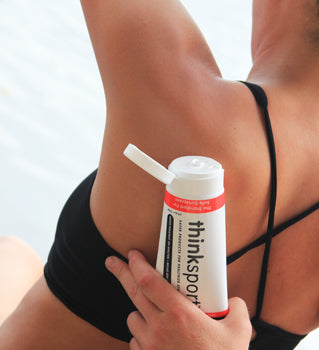
Growing Research on Avobenzone
In addition to the concern over oxybenzone and some of the other common chemicals that support oxybenzone, avobenzone moved in as a replacement chemical. Unfortunately, it is not common when one chemical is isolated that companies move on to other chemicals which have equally or more deleterious properties. Studies have shown that the combination of sunlight and chlorine water with avobenzone can produce a carcinogenic compound.
- National Institute of Health: Transformation of Avobenzone in Conditions of Aquatic Chlorination and UV-Irradiation
- New York Post: Chlorinated Pools Can Turn Sunscreen Into A Cancerous Toxin
Water Resistance
There are now three levels of water resistance. Not water resistant, water resistant (40 minutes) and water resistant (80 minutes). We have all become used to seeing words like “sweatproof” or “waterproof”. The FDA kicked that terminology out. There are now very specific tests. Keep in mind, that if you’re at the beach or pool that you’ll need to reapply after being in the water. And to achieve the SPF factor of your sunscreen you have to reapply every two hours. One application does not keep you at SPF 50 or whatever is on the sunscreen label. And you should be using about 1oz to cover an adult body.
Aerosols and Wipes
A lot of consumers like sprays and wipes due to the ease of application. There are several problems here though. First, who knows what you and your children are inhaling. Companies should be required to provide proof via studies that the ingredients in the aerosols are safe. Second, a recent study showed that parents were applying 25% of the right amount of sunscreen. SPF is a logarithmic function. So 25% of SPF 50 means you’re getting something closer to SPF 3. People end up spending more time out in the sun, not realizing that they’re getting a heavily reduced protection from UVB. And it is scary to think how much UVA that they are consuming.
Sun Safety Tips
So the scary stat is that skin cancer is the most prevalent form of cancer. There are more incidents of skin cancer than all of the other cancers combined. (Stern 2010)
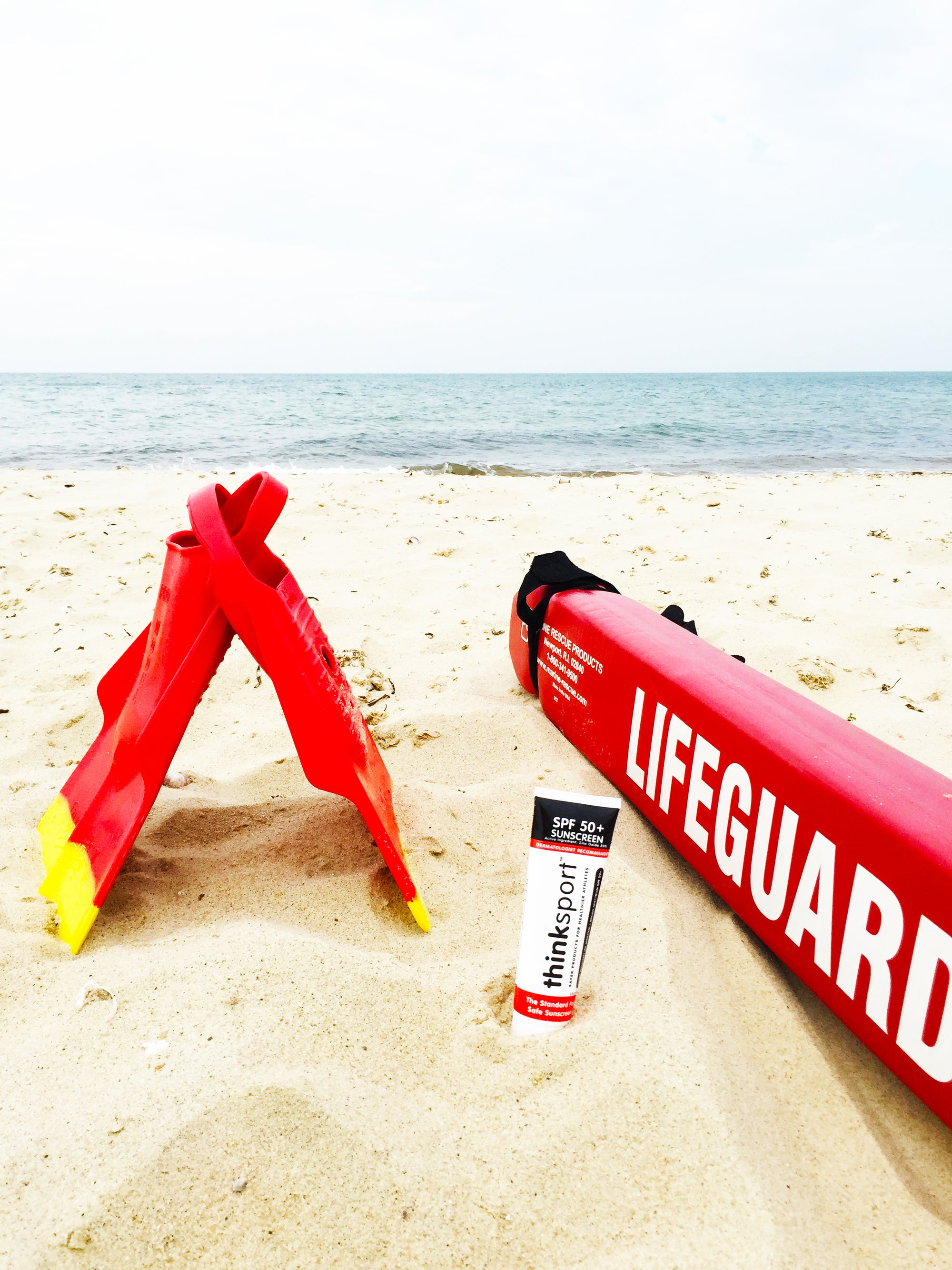
Skin Cancer Sucks - The good news is that it is the most preventable.
It starts with wearing protecting clothing from hats, long sleeves and sunglasses. The next step is to stay out of the sun during peak UVA and UVB of 10am to 4pm. Use umbrellas or setup for outdoor activities in the shade. Remember that overcast days do not mean you’re not getting UV exposure. And finally, use safe, non-toxic sunscreen. Don’t forget to consult the Environmental Working Group’s database Skin Deep: (EWG.org/SkinDeep). Type in your sunscreen name or enter each ingredient into the database. You’re looking for a sunscreen that carries an overall “1” rating in EWG. For ALL sunscreens it is imperative that you reapply every two hours. Do not overspread sunscreen as it will decrease its effectiveness. The FDA recommends 1 full ounce to cover an adult body. This is by far the most common mistake on sunscreen.
Bottom line: Protect your skin. After all, it’s your largest organ…
Thinkbaby & Thinksport is a founding member of the Sun Safety Coalition, and a member of theSafe Screen Council.

